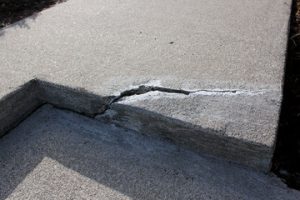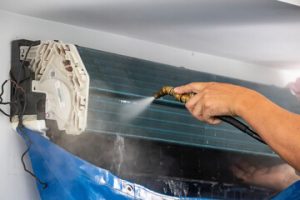Concrete services can transform your property into a captivating masterpiece. From decorative walkways to structural foundations, Residential Concrete Contractors Columbus Ohio offer professional expertise and creativity.

There are several things to consider when choosing a residential concrete service, including experience, licensing/insurance, and quality of artistry. This article will cover each of these factors and help you make an informed decision.
Choosing a residential concrete contractor with years of experience will help you get the quality results you need to create your ideal outdoor living space. You should ask about their portfolio to see images of projects similar to yours and learn more about their process, attention to detail, and craftsmanship. Reviews and testimonials from past clients can also give you insight into their level of professionalism and customer service skills.
When hiring residential concrete contractors, you want to make sure they have the necessary licensing and insurance to cover any potential accidents or damages that may occur during the project. Having this information upfront will help you avoid any surprises down the road. Licensing demonstrates that they follow industry standards and are qualified to perform the work, while insurance protects you from any financial liability in the event of an accident.
Many residential concrete contractors will provide a list of references or access to their project portfolio upon request. Reviewing these photos and contacting past customers can help you gauge the contractor’s level of expertise, reliability, and satisfaction. It’s important to look for a range of photos that demonstrate the contractor’s skill, as well as before and after photos for each project. Pay particular attention to the size of the projects and how they were completed, as this will help you determine if their services are right for your home.
In addition to asking about their work history, you should also inquire about the contractor’s education and training. Typically, concrete contractors will start their careers as apprentices with companies specializing in concrete construction services. During this time, they will gain practical knowledge and acquire essential skills needed to become a licensed concrete contractor. They will also have the opportunity to network with other industry professionals and gain an understanding of new trends, technologies, and approaches. A willingness to learn and grow is a crucial trait for concrete contractors, as it will help them stay current on industry changes and advance their career.
Licensing and Insurance
If you want to make the best investment in your home, it is important to choose a residential concrete contractor with the right experience and qualifications. They should also be licensed and insured. This will help you avoid liability issues in case of any problems during the project.
In addition, you should check the contractor’s past projects and customer reviews. You can also ask them to provide references for their work. If you find positive reviews, it is a good sign that the contractor has the necessary experience to deliver quality results.
A reliable residential concrete contractor is one who is committed to delivering top-quality results and will not compromise on the quality of the project. They will use superior materials and precise techniques to ensure that the finished product meets or exceeds your expectations. They will also be able to anticipate any potential issues, saving you time and money in the long run.
The most reputable residential concrete contractors will offer free quotes for their services. They will also have a portfolio of their previous works that you can review. This will give you a better idea of their quality and style. You should also ask about their insurance coverage and whether they are bonded.
Residential concrete contractors specialize in a variety of construction projects, including pouring foundations, driveways, patios, and sidewalks. They can also construct concrete infrastructure such as bridges, dams, tunnels, airports, and highways. They have the knowledge and skill to design and build complex concrete structures, making them a valuable asset for commercial properties.
Concrete walkways and sidewalks are essential for ensuring pedestrian safety, especially in freeze-thaw climates. When properly textured, they improve traction and reduce the risk of slip and fall accidents. Concrete is also highly durable, and it requires very little maintenance to keep it looking great.
A professional residential concrete contractor will have a proven track record and a wealth of industry experience. They will also be able to provide you with a warranty for their work. This will give you peace of mind that the work will be completed to your satisfaction and will last for a long time.
Reputation
When it comes to residential construction, the importance of a sturdy and durable foundation cannot be overstated. Whether you are building a new home or renovating an existing one, the concrete contractor you choose will play a crucial role in the quality and longevity of your property. Finding the right residential concrete contractor will take a bit of research and evaluating multiple factors such as experience, reputation, communication, warranties, and local expertise.
When evaluating potential residential concrete contractors, it is important to look at their portfolios to see photographs of their completed projects. This will give you a sense of their craftsmanship and level of artistry. Ideally, you should be looking for a portfolio that includes photographs of decks, patios, walkways, driveway paving, slabs, and other concrete projects similar to yours.
In addition to examining their portfolio, you should also read online reviews and testimonials of their previous clients. This will give you a good idea of their overall quality, customer service, and communication styles. Many contractors will have their own website or Facebook page where they will post unbiased reviews from their customers.
Another great way to assess the quality of a residential concrete contractor is by asking for references from their past clients. This will allow you to talk with them directly and ask questions about their experience working with the contractor. Typically, you can find this information on the company’s website or through online review platforms such as Google, Yelp, and Angi.
A good residential concrete contractor will have a solid track record and will be licensed to operate in your area. They will also have a reputation for completing projects on time and within budget. Choosing the right contractor will ensure that your concrete project is done correctly the first time around, saving you money and ensuring a smooth and seamless process from start to finish.
Residential concrete contractors can be used to build a wide range of structures on your property. Whether you need a sidewalk, steps, or retaining walls, these professionals will be able to help you create the perfect structure for your needs. They can also use their knowledge to help you maintain your concrete, ensuring it looks its best for years to come.
Free Quotes
Whether you’re building a foundation, installing a driveway, or creating a custom outdoor concrete project, a residential concrete contractor is an invaluable asset to your construction endeavors. The right contractor can ensure that your concrete is aesthetically appealing, structurally sound, and durable for years to come, increasing the value of your home. Finding the best residential concrete contractor for your project requires careful consideration of multiple factors, including experience, licensing/insurance, and quality of artistry. Here are some tips for making the process as smooth and stress-free as possible:
When choosing a residential concrete contractor, look for one with an extensive portfolio that shows their previous work. This will give you a good idea of their style and workmanship. In addition, you can also contact past clients to ask questions and get an insider’s perspective on their experiences. Inquiring about pricing, estimated timelines, down payment requirements, and other details is another way to gauge your potential contractor’s suitability for your project.
An experienced residential concrete contractor will have a deep understanding of the intricacies of concrete work. They’ll be able to anticipate challenges and work around them, providing solutions and improving the overall outcome of your project. Moreover, they will bring a level of artistry to your project that’s difficult to replicate by amateurs. Their knowledge and expertise in different concrete types and finishes will allow you to achieve the exact look that you want for your home.
Another important factor to consider when choosing a residential concrete contractor is their ability to provide you with a free quote for your project. This will help you determine the costs of various options and find the best solution for your budget. A reputable residential concrete contractor should offer competitive prices without cutting corners or sacrificing the quality of work.
Choosing the right residential concrete contractor can make or break your construction project. Take the time to meet with several candidates, review their portfolios, and ask questions to determine which is the best fit for your needs. By taking these steps, you can rest assured that your project will be handled efficiently and effectively from start to finish.




